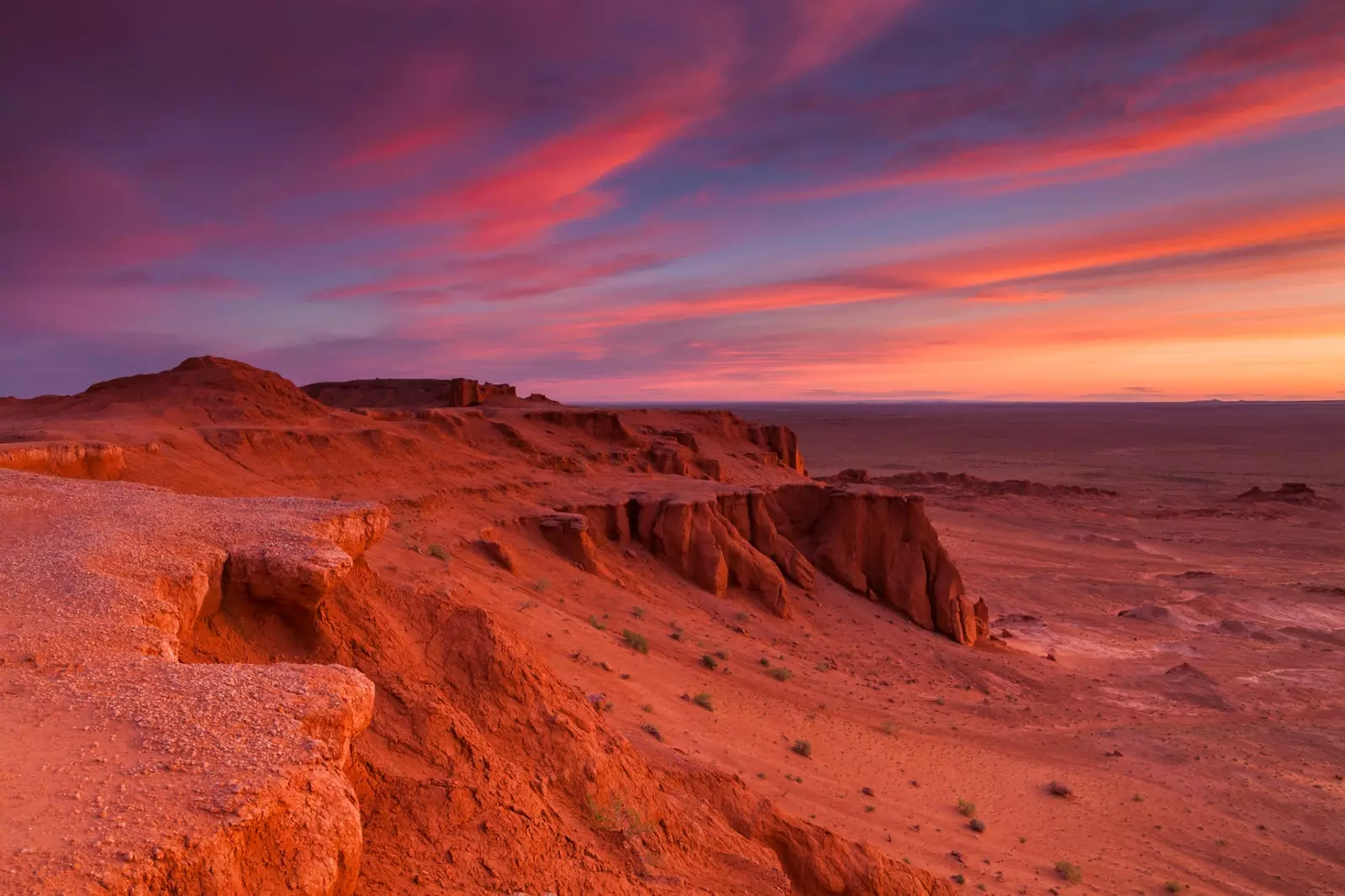
Flaming Cliffs, in the Gobi desert in Mongolia.
In 1922, the American paleontologist and adventurer Roy Chapman Andrews arrived with a caravan of cars and camels from Peking to the isolated flaming cliffs of Bayanzag, in the middle of the Gobi desert in Mongolia.
Andrews went through all kinds of hardships to get there: the orography of the terrain left more than one vehicle stranded and raids by bandits in the desert were frequent. However, the adventure was worth it: in Bayanzag, the paleontologist –who is said to have inspired the character of Indiana Jones– he discovered the first dinosaur eggs in history.
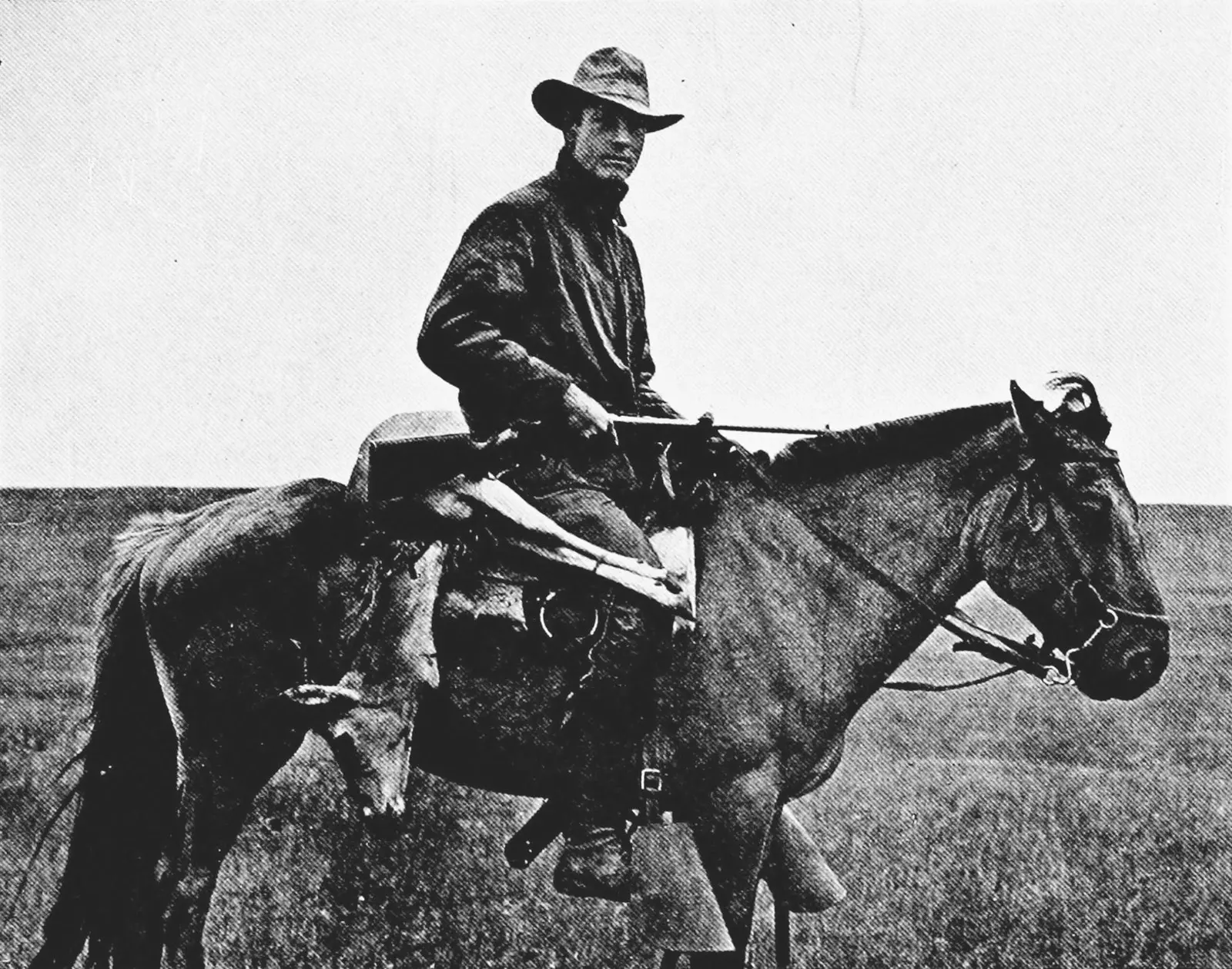
Roy Chapman Andrews across the Mongolian plains at the turn of the last century.
Among Andrews' finds in this area are the first specimens of velociraptor or protoceratops. His team collected 80-million-year-old fossils from up to 140 species of dinosaurs, as well as prehistoric mammals. Imagining Bayanzag at that moment in history would not be far from a jurassic paradise.
OVERWHELMING EMPTY
Nearly 100 years after Andrews' arrival, accessing this imposing reddish rock formation it is less risky, but what one can find is almost the same as what he saw for the first time: a Martian landscape, reminiscent of Monument Valley in the United States and where, even today, traces of those who inhabited the Earth can be found before us.
Its name in Mongolian is Bayanzag, although popularly it is known as flaming cliffs. The rays of the sun that illuminate its reddish slopes in the middle of the immense desert landscape turn them into a flare that rises into nothingness.
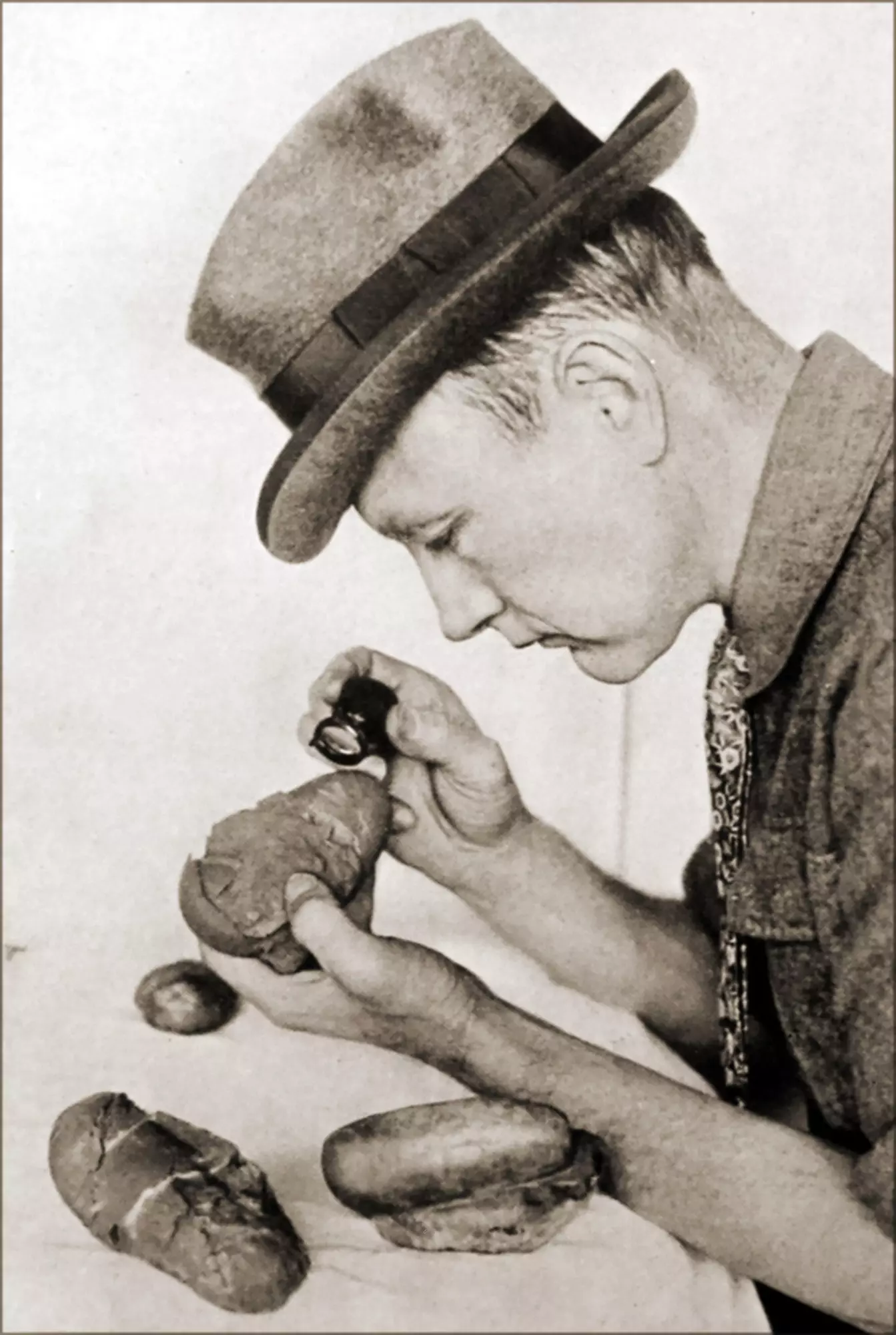
Roy Chapman (1884-1960), director of the American Museum of Natural History, was said to have inspired the character of Indiana Jones.
In Andrews's day, the only sign of human life likely to have existed here would be a few nomadic yurts scattered over thousands of miles. Today, near this natural monument, there are some resorts to accommodate tourists. Along the way, there are also two settlements that have risen from the desert over the years.
By settlements is meant a speck of civilization in which there is a gas station, a small supermarket, four houses, a playground and a repeater antenna that gives a signal to mobile phones. They look like straight out of the Mad Max movies.

The settlements in the area consist of a gas station, a supermarket and four houses.
The closest to Bayanzag is Bulgan, on the route that comes from the dunes of Khongorin Els. It even has a curious dinosaur museum no bigger than a barracks, incomparable with the American Museum of Natural History in New York, where most of Andrews' discoveries are found.
To the north, the other settlement is Mandal Ovoo, more than half a day's drive through the desert.
Bayanzag cannot be visited from any major city. It has to be a stopover on a multi-day route, and if done on your own, come prepared with extra fuel and water.
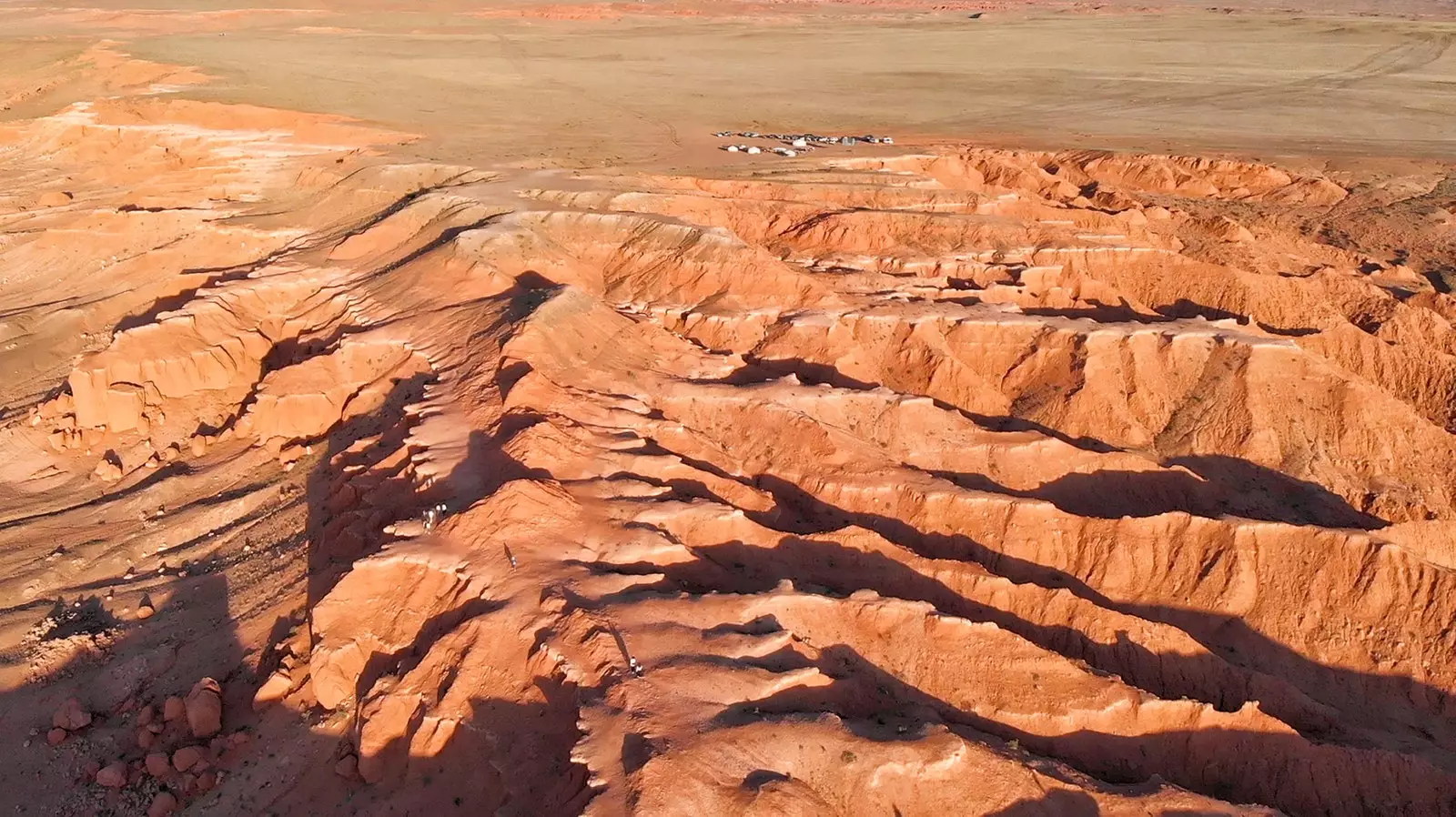
Few yurts of nomads are found in Bayanzag.
A LUSH FOREST IN THE MIDDLE OF THE DESERT
The climate is arid, desert and very hot. The locals claim that hundreds of years ago, the area was a lush forest that disappeared due to climatic evolution. However, reaching the cliffs you can see groups of low trees that only grow in this area of the Gobi desert, with roots that go tens of meters deep into the ground and capable of surviving the harshest conditions.
Those who also survive in harsh conditions are the Few nomads living in this area. Just as in the north of the country it is common to see yurt camps, in the Bayanzag area the white dots of these tents on the horizon are few. Still, on the way or out of the cliffs, it is not uncommon to find herds of animals belonging to these nomadic herders.
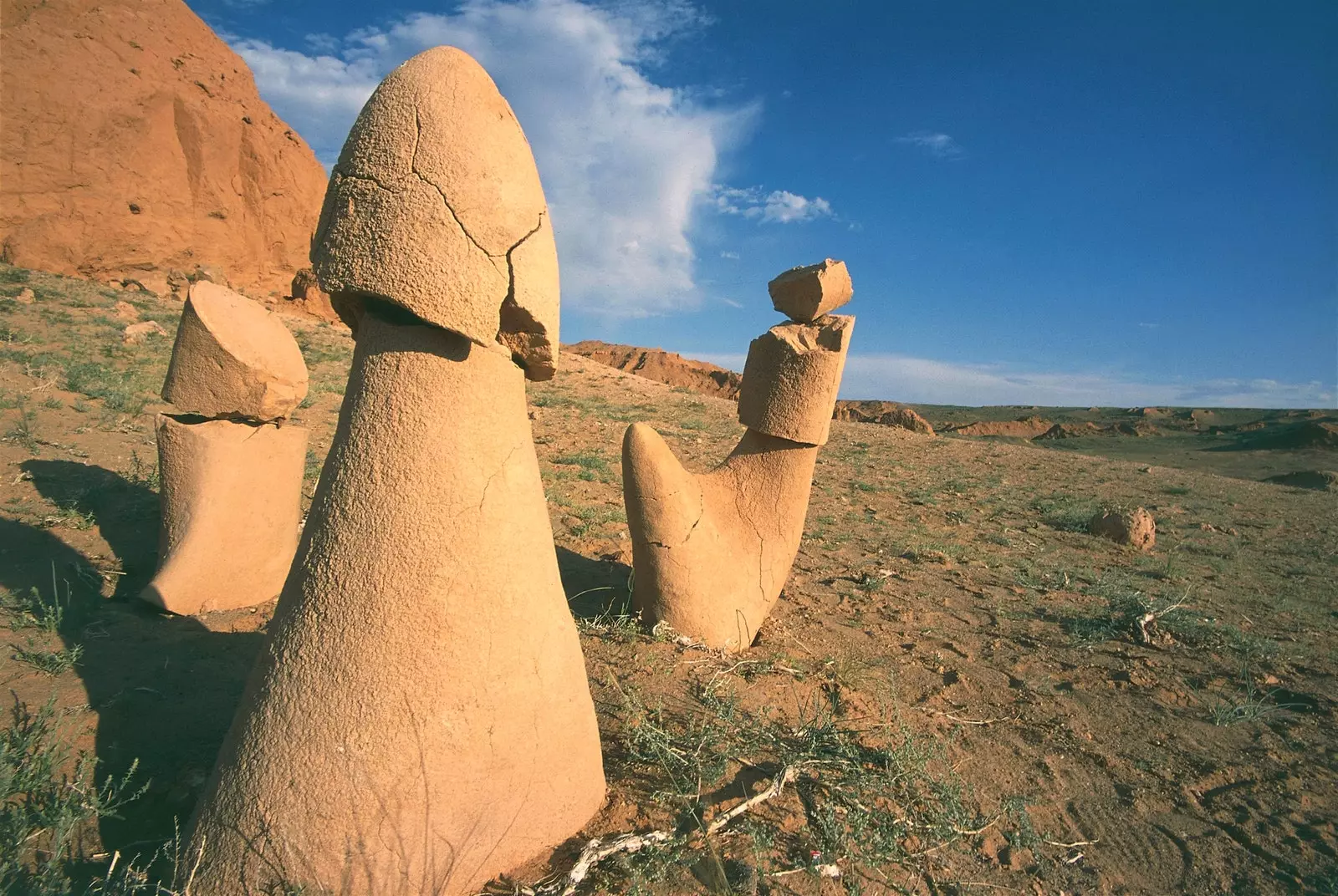
Fossilized dinosaur bones in the Bayanzag Valley.
To follow in the footsteps of Roy Chapman Andrews you have to hire a specialized excursion. Even today it is possible to find dinosaur fossils. Many local guides know where and how to see them, although it is totally forbidden to take them. It is not unusual to see groups of geologists and other scientists studying this terrain. just a few years ago, in 2013, dinosaur eggs were found again in Bayanzag.
On your own, you can leave your car in a parking lot where there are souvenir stalls where you can find local crafts, as well as all kinds of minerals and animal bones, although you hardly see them as dinosaurs.
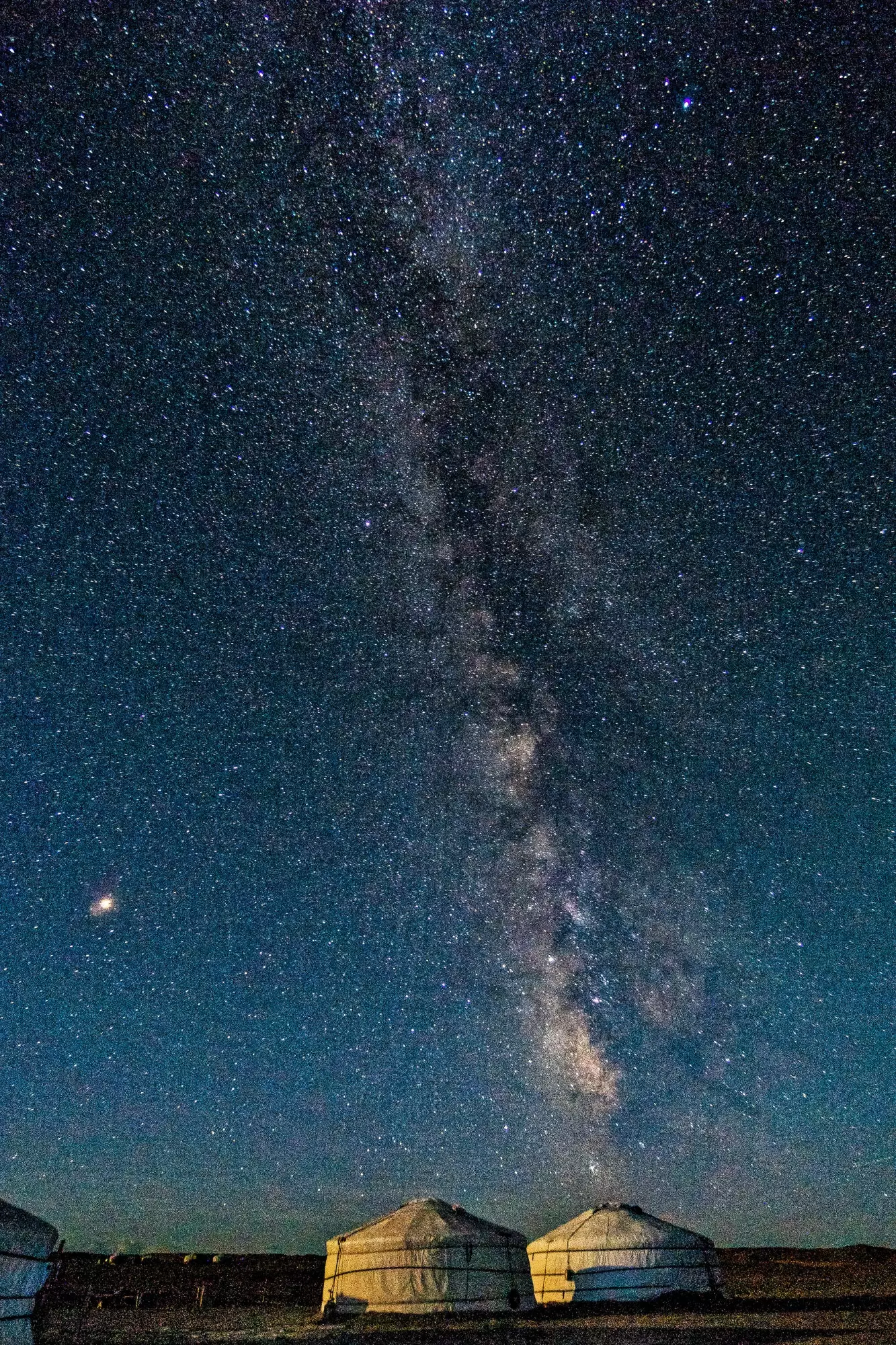
Milky Way over some yurts on the flaming cliffs of the Gobi desert.
Once the car is parked, you walk along the labyrinthine slopes of these sheer cliffs, whose forms have been eroded by the wind. The views are stunning and the emptiness is overwhelming. As far as can be seen, a huge plain stretches out that is part of the Gobi desert without a single trace of human presence. It is like looking at an infinite sea of land.
As in all of Mongolia, you can camp in Bayanzag without permits, but the sun here is inclement and there is hardly any shade to shelter, so it is best to follow the route north or stay in one of the resorts in the area.
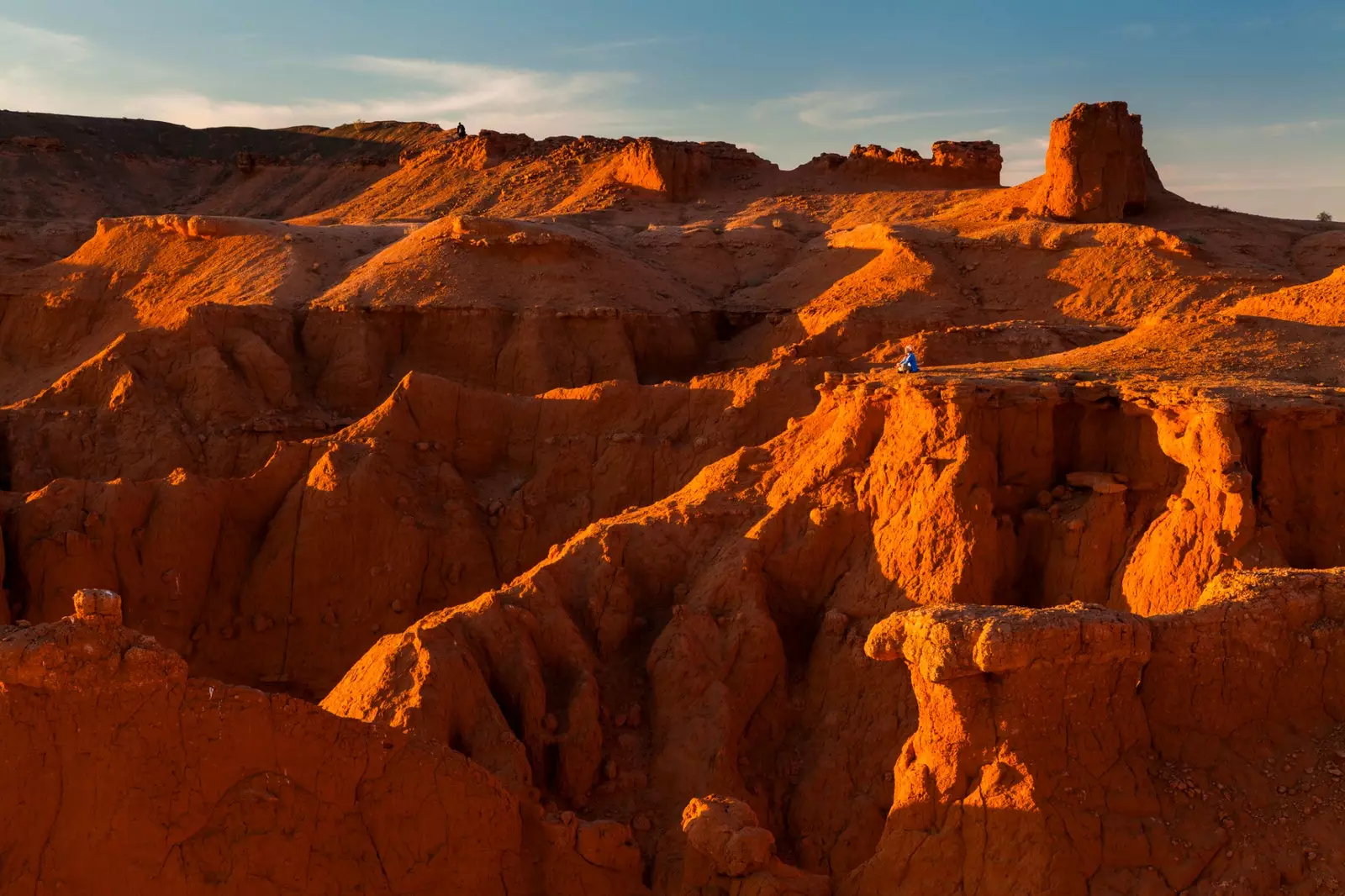
From the cliffs you can see a huge plain that is part of the Gobi desert.
